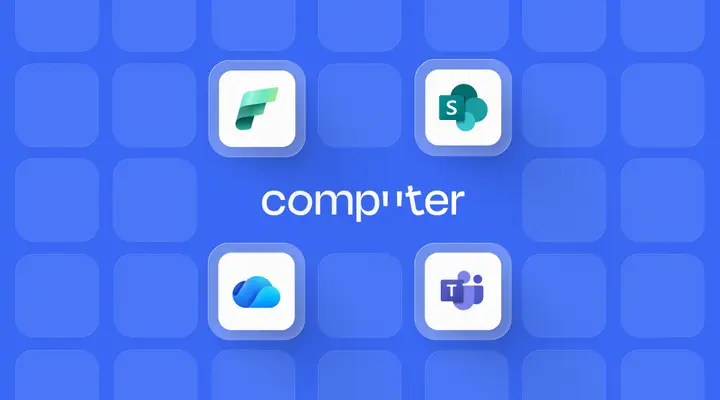Computer understands your business’s unique data, mapping your real-world terms to the right fields, and delivering instant, accurate answers. No more guesswork, or clock-watching as you wait for analysts – just clear, conversational insights, every time.
–
A Slack message arrives from the VP of Sales: “Which deals in our forecast haven't had any activity in the last two weeks, but are still marked as closing this quarter?”
Simple question. But getting the answer requires a data analyst: when was each deal last touched? Which ones are supposed to close soon? Has anything changed? Better check against emails, calls, and meetings, and then pull it all together.
When the answer arrives two hours later (at best), the review meeting has already started – and you walked in with numbers you couldn’t back up. We all know how (badly) this story ends.
The promise – and the gap
Over the past few years, “natural language to SQL” solutions promised to democratize data access. We were told that all we needed to do was ask questions in plain English, and we’d get answers in seconds.
The technology got superficially impressive. But in production, things kept breaking. The SQL was syntactically correct. The queries ran without errors. But again and again the answers were wrong.
Why? Let’s revisit that Slack message from the VP. You get started by asking, “Which deals are approaching their commit date?” But in your system, that field is called “Break Date.” So, your tool searches for “commit_date,” finds nothing, and returns the wrong field – maybe “close_date” or “created_date.”
Every organization has dozens of these; some have hundreds, even thousands: “Commit Date” stored as “Break Date.” “Health Score” stored as “CS_Health_Index.” “Priority Tier” stored as “Cust_Priority_Level.” And when data lives across tools, it gets worse: support tickets use “Urgent / High / Medium / Low,” but the CRM uses “P0 / P1 / P2 / P3,” and the project tool calls it “Critical / Important / Normal.”
So the models guess. They look for field names that sound right. They generate SQL that seems right.
That’s because while general purpose LLMs can generate impressive SQL syntax, they struggle with the nuances of real business, and real (sometimes messy, often fragmented) data sets. Even with schema documentation, they’re working from a snapshot, not a living system. They can’t dynamically fetch updates, or understand how custom fields relate to standard objects.
This is why we built Computer differently.
The three layers of data intelligence
You need three connected layers to make data like this truly accessible:
1. The first layer is “syntax” – which means translating natural language to SQL. This is what general purpose LLMs and most text-to-SQL tools do. They’re good at it. But for all the reasons above, syntax alone produces impressive queries that return wrong answers.
Most analytics tools are stuck here.
2. The second layer is “schema” – which validates queries against actual data structures. This prevents hallucination and runtime errors.
A few tools are starting to address these issues. But while it’s necessary, it’s still not enough. You can have perfect schema validation and still not understand what the data means.
3. That requires the third layer, “semantics” – which means understanding business context, relationships, and meaning. Only at this layer do custom fields become intelligible. “Break Date” is understood as “commit date,” “high priority” maps correctly across different software, and multi-object queries traverse real relationships instead of guessing at joins.
Computer takes full advantage of all three layers.
How Computer gets this right
Computer AirSync standardizes all your organization data (while preserving critical context data) when it brings it into Computer Memory, our permission-aware knowledge graph. So, when Computer sees “Break Date,” it understands that it means “commit deadline.” It learns (because Computer never stops learning) that “P0” in your CRM equals “urgent” in support tickets.
When you ask Computer a question, it validates against actual schemas in real time, because they’ve been integrated into Computer Memory. It knows which tables exist, which columns they contain, and how they relate. When you ask about “tickets linked to this enhancement,” Computer understands the object relationships and performs the joins automatically.
And then? Computer responds conversationally, accurately, and proactively: you get the 21 tickets; you get them in a neatly summarized and organized list; and you get suggestions for additional context and analysis about potential emerging trends.
No CSV uploads. No waiting for the analyst. No more potentially dangerous hallucinations. Just a question, then an answer.
Conversational analytics has truly arrived
Conversational analytics is here. We’ve built Computer’s semantic layer. So stop wasting time and resources on data analysts, or wondering if your tools are giving you the right information.
With Computer, product managers can ask “Show me all tickets linked to this enhancement” and get instant answers about cross-functional dependencies. Sales leaders can ask for “Opportunities above $1M in the last quarter by enterprise team US” during pipeline reviews. Customer success teams can identify churn risks, and ask about engagement patterns in natural language.
Because making data work for you isn’t really about SQL, or tables, or joins.
It’s about questions, and answers, and decisions. It’s about turning “Can someone tell me” into “Here’s what you need to know.” Instantly, conversationally, accurately.
Computer is ready.
And our team is always happy to help: book your free demo, and never look back.



